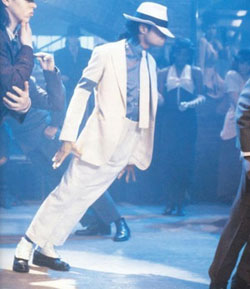 Remember the video for “Smooth Criminal?”
Remember the video for “Smooth Criminal?”
Remember that gravity defying lean from the video?
Ever get to see it live and, noticing a lack of wires, wonder how they did it?
Long before CGI, film producers could employ techniques like the use of wires to create unreal effects on screen – props in production that where carefully obscured or hidden for the polished final piece – but that’s not what Michael Jackson wanted when it was time to take this particular routine on the road …
Continue reading “Michael Jackson’s Patent: Anti-gravity Illusion”



 Edison executed the first of his 1,093 successful U.S. patent applications on 13 October 1868, at the age of 21. He filed an estimated 500–600 unsuccessful or abandoned applications as well.
Edison executed the first of his 1,093 successful U.S. patent applications on 13 October 1868, at the age of 21. He filed an estimated 500–600 unsuccessful or abandoned applications as well. On May 15 1809, Mary Dixon Kies received the first U. S. patent issued to a woman. Kies, a Connecticut native, invented a process for weaving straw with silk or thread. First Lady, Dolley Madison praised her for boosting the nation’s hat industry. Unfortunately, the patent file was destroyed in the great Patent Office fire in 1836. Until about 1840, only 20 other patents were issued to women. The inventions related to apparel, tools, cook stoves, and fire places.
On May 15 1809, Mary Dixon Kies received the first U. S. patent issued to a woman. Kies, a Connecticut native, invented a process for weaving straw with silk or thread. First Lady, Dolley Madison praised her for boosting the nation’s hat industry. Unfortunately, the patent file was destroyed in the great Patent Office fire in 1836. Until about 1840, only 20 other patents were issued to women. The inventions related to apparel, tools, cook stoves, and fire places.